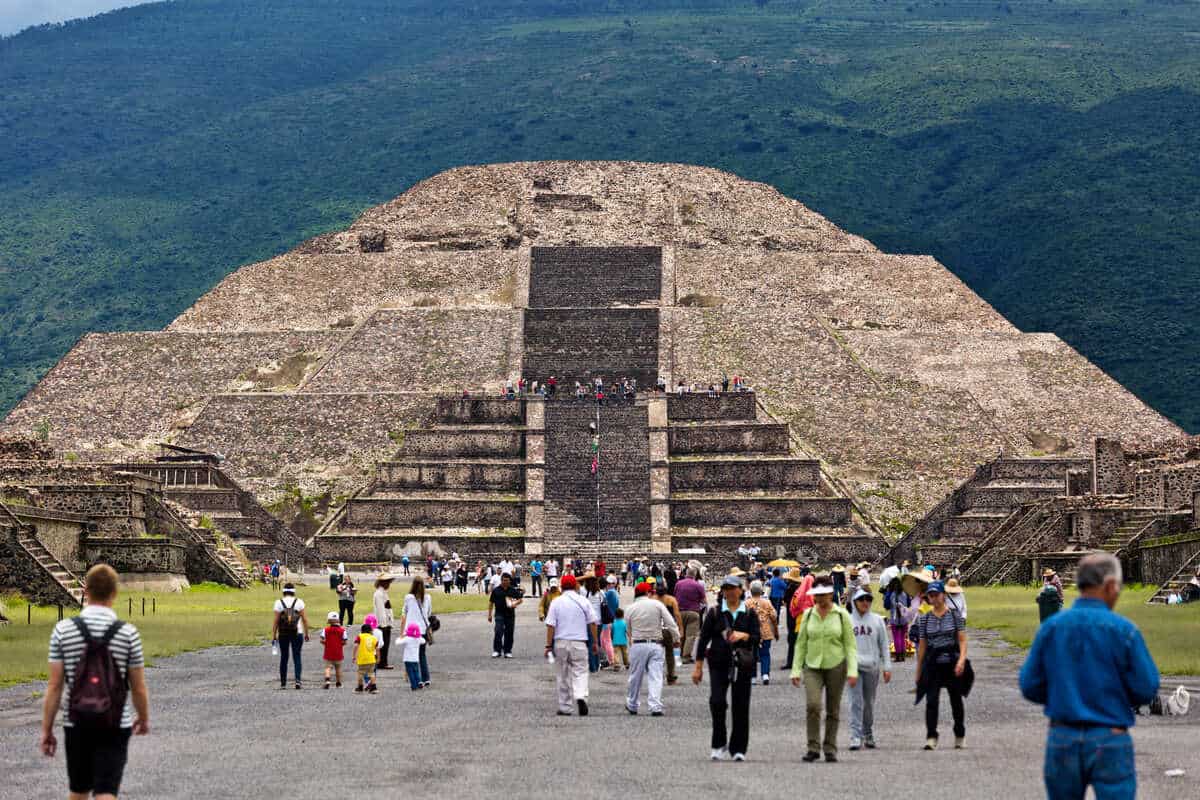Mexico is America’s favorite sunny getaway, with its Caribbean beaches, hospitable locals, and competitive prices attracting millions of U.S. citizens every year. While it is undeniably the King of Tourism, little is said about how actually safe and inviting it is.
In fact, several news articles circulating online seem to negatively promote Mexico as a risky destination, where drug lords run amok, and tourists must be in a high state of alert constantly not to get caught in a crossfire.
This couldn’t be further from the truth.
In this article, we will give you 3 reasons why Mexico is the perfect sunny getaway, but also how it is perhaps the most tourist-friendly country in all of Latin America:
It Is Safer
First of all, let’s address the elephant in the room: Mexico’s safety issues.
It may be true that the country is no Iceland or Finland when it comes to urban challenges, but it is far from being comparable to a majority of its Latin American counterparts.

Mexico’s crime rates may be high along border zones, where gang activity is prominent, but it is moderate to low in tourist hotspots like Cancun and Los Cabos, with both cities being described as ‘Level 2’ destinations by the U.S. State Department itself.
This means that American visitors must exercise more caution when visiting than had they holidayed instead in Level 1 destinations like aforementioned Iceland, but that there are no seriously disruptive safety threats known to affect them.
How Mexico Differs From Other Latin American Countries

The same cannot be said of Colombia, yet another popular Latin American country where crime, including murders, has risen in recent months, particularly in Medellin.
Americans are being told to ‘reconsider’ traveling to Colombia, but not to a majority of Mexican states. Security levels have deteriorated in Peru as well, where major nationwide protests have taken place, leading flights to be canceled and the iconic site of Machu Picchu sealed off for weeks.
Latin America is a hotbed for civil unrest and political instability, but Mexico has remained relatively stable in recent years, at least when compared to its counterparts.

It has also proven to be tough on crime, with the national guard deployed to beaches in Cancun to ensure tourists feel safe year-round and new state-of-the-art technology being brought in to increase surveillance in key areas.
No Latin American state acknowledges the power of tourism as Mexico does, nor the economic benefits it entails, and their goal is to ensure tourist dollars are pouring in.
In other words, they will keep on keeping security tight.
English Is More Widely Spoken Than In Other Latin American Countries

Not to sound like an obnoxious tourist, but who doesn’t find it easier to travel and explore a new country when English is the secondary lingua franca in use, and you don’t need to resort to silly hand gestures or Google Translate’s odd phrasal constructions to get your point across when conversing with locals?
As those who have traveled around non-tourist-friendly Brazil will know, exploring a Latin American destination where international tourism has not yet been well established as a contributor to the economy, and nationals struggle to communicate with foreigners, and subsequently provide them a service can be incredibly challenging to say the very least.

Luckily for Mexico vacationers, the country has developed close ties with their North American counterparts in the States and Canada, and Mexican providers in nearly every single tourist town will know at least basic English and be able to assist you without major communication barriers.
It is estimated that over 12% of the Mexican populace is able to communicate well in English, a wide advantage over Argentina’s 6%, Brazil’s 5.1%, or Colombia’s 3%.
Finally, The Infrastructure Is Better

As Mexico is so popular among foreign tourists, and it’s already undergone great changes in the past decade to both modernize and better accommodate guests, it’s hard to find another LatAm nation as well-equipped to handle the surging demand in international travel as Mexico.
New hotel openings are announced every other week, with the Hyatt Group being the latest to confirm three major openings in all of the country’s top destinations, and Mexican airports have continued to strive for excellence in service, from the opening of eGates to the ditching of overly bureaucratic entry forms.

This makes Mexico the only country in Latin America where Americans can breeze through the border in no time without requiring border interrogations or filling out forms.
All of the main tourist attractions are quite tourist-friendly, too, with informative boards in English, and the availability of English-speaking guides, especially in the Tulum and Chichen Itza archaeological complexes.
The same cannot be said about other Mayan spots in Central America, where the tourism industry is not yet as developed, and visitors are often left to fend for themselves in trying to find a specific ruin or obtaining information pertaining to an attraction.
A New Major Tourist Train Launching Soon

Additionally, historical infrastructure projects are taking place as we speak across Mexico’s resort zones. Cancun’s Colosio Boulevard is undergoing construction at the minute with the sole goal of easing traffic jams traveling to and fro the mega-hub that is Cancun Airport, and most importantly, the Maya Train launch date is quickly approaching.
Learn more about it here.
The scenic railway will promote connectivity all around the Yucatan Peninsula, where some of Mexico’s most popular attractions are scattered, including the aforementioned Chichen Itza pyramid and Tulum ruins and the trendy beach towns of Playa Del Carmen and Puerto Morelos.

Very few Latin American countries have a railway system in place aimed at helping tourists get to where they need to be without resorting to exorbitantly expensive private transfers or complicated flight routes, making Mexico a regional leader in tourism infrastructure.
As great as other LatAm states may be, they still can’t touch the mighty Mexico.

